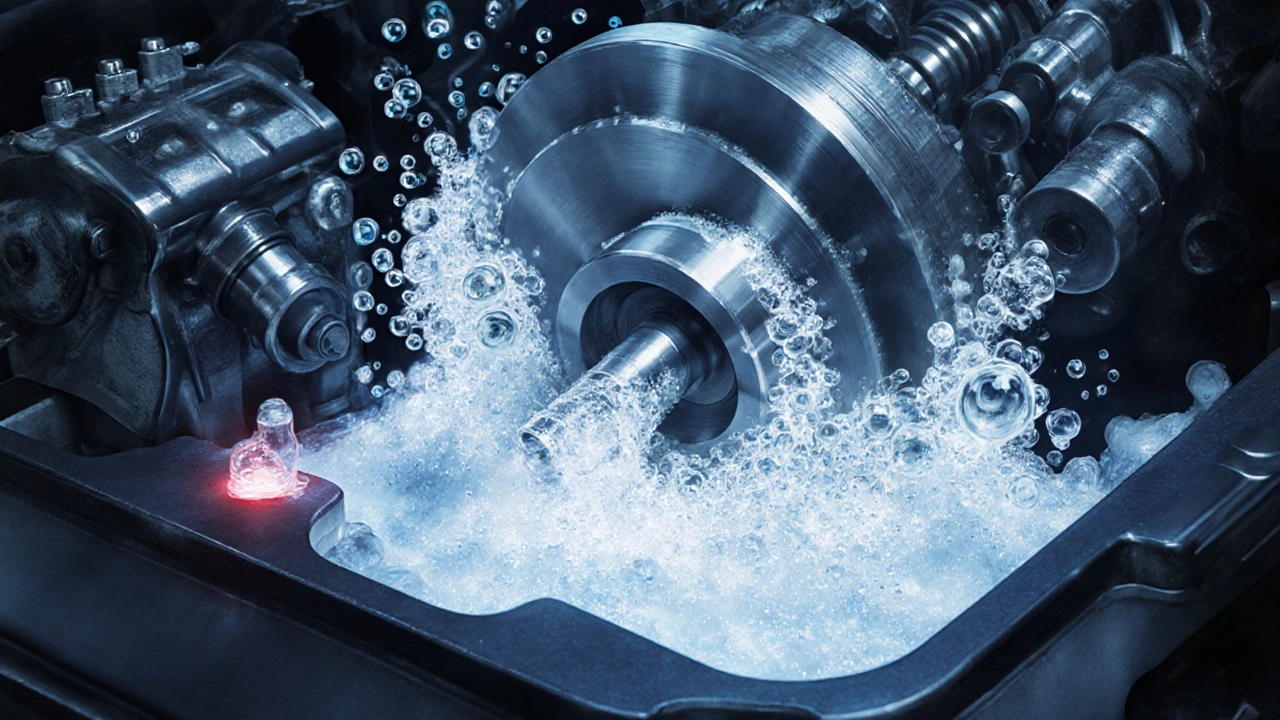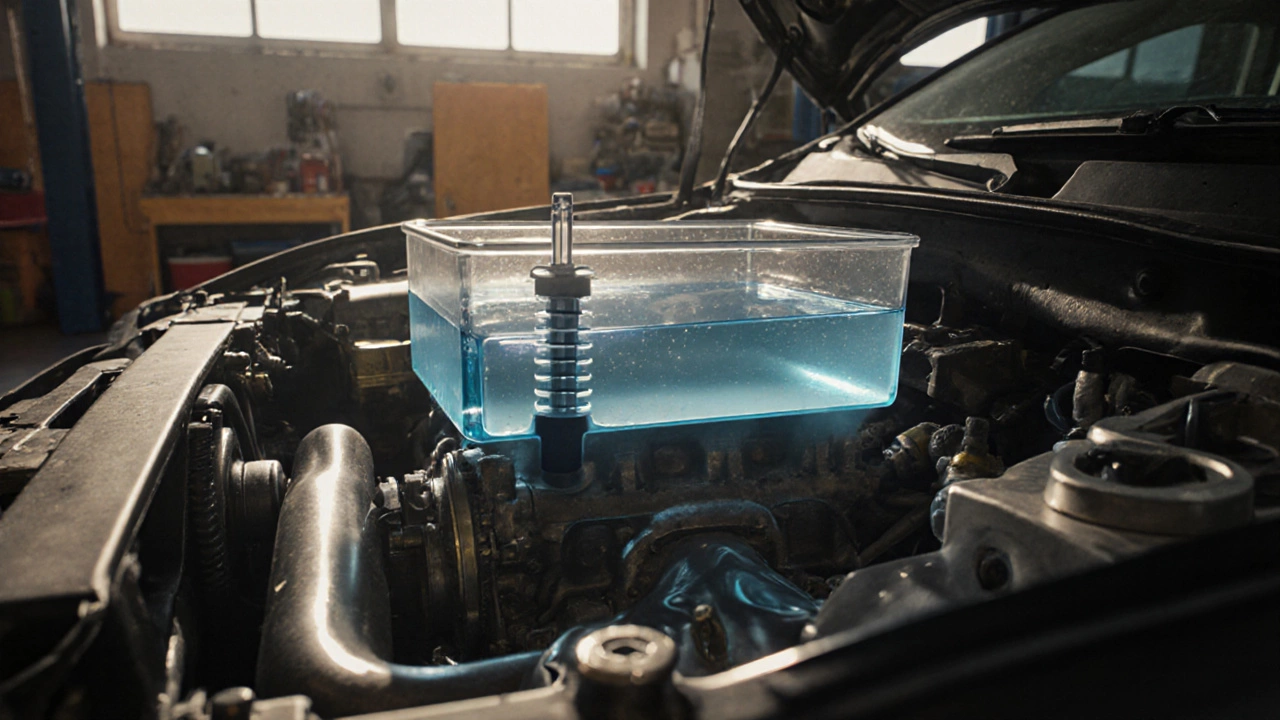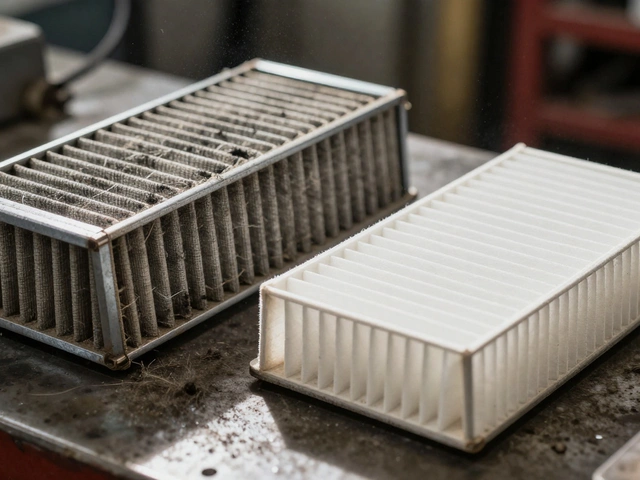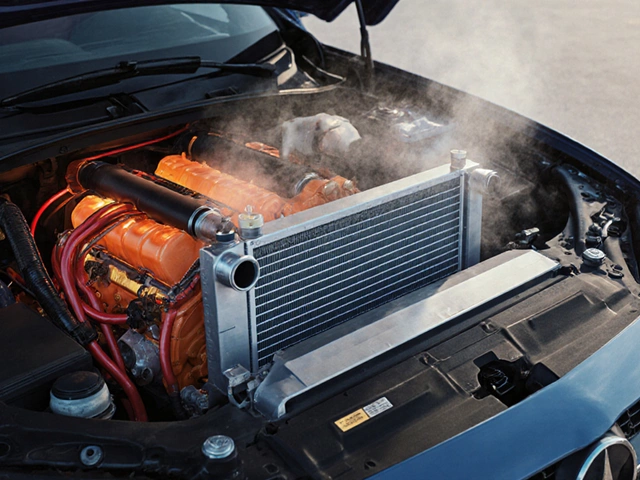Engine Oil Overfill Calculator
Check Your Oil Level
Results
Enter values to see calculation results.
What does “one extra quart” actually mean?
Most passenger cars have an oil capacity ranging from 4 to 8 quarts. Adding one extra quart might sound harmless, but it pushes the level past the “full” mark on the dipstick and into the crankcase space designed for a precise amount of fluid.
Why proper oil level matters
Engine oil does three jobs: lubricate moving parts, carry heat away, and clean contaminants. The balance between oil volume and the space inside the engine (the crankcase) is carefully engineered. Too little oil means metal‑to‑metal contact; too much oil creates aeration, foaming, and excess pressure.
How an extra quart can damage the engine
When oil exceeds the designed capacity, several things happen:
- Foaming and aeration - The crankshaft spins fast enough to whip the surplus oil into a frothy mixture. Foam can’t carry heat well, so the engine runs hotter.
- Increased pressure on seals - The oil panthe low‑point reservoir that collects oil before it’s pumped back into the engine experiences higher pressure against its gasket, accelerating leaks.
- Reduced oil pump efficiency - The oil pumpa mechanical device that draws oil from the pan and distributes it through engine passages can’t maintain consistent flow when the oil is churned and full of bubbles, leading to low‑oil‑pressure warnings.
- Hydraulic lock risk - In extreme cases, excess oil can get into the combustion chambers when pistons are near top dead centre, causing a sudden pressure spike that can bend valves or damage pistons.
Symptoms of an overfilled engine
Drivers often notice a combination of the following signs:
| Symptom | Likely Cause |
|---|---|
| Oil pressure light flickers or stays on | Foam reduces effective pressure |
| Excessive blow‑by fumes from PCV valve | Oil entering combustion chamber |
| Oil leaks from gasket seams | Higher pan pressure |
| Engine runs hotter than normal | Reduced cooling efficiency |

How to check if you’ve overfilled
The most reliable way is to use the dipstick correctly:
- Make sure the engine is cool and the vehicle sits on level ground.
- Pull the dipstick out, wipe it clean, and re‑insert fully.
- Pull it out again and read the level. The “Full” line is usually near the top of the marked area; any oil above that line means you have too much.
If you see oil above the mark, you’re dealing with a engine oil overfillthe condition of having more oil in the crankcase than the manufacturer’s specified capacity situation.
Correcting an overfill safely
Don’t just keep driving hoping the excess will drain. Here’s what to do:
- Use a manual siphon pump or a turkey‑basin to remove oil until the dipstick reads within the “Low‑Full” range.
- After draining, re‑check the level a few minutes later; oil can settle.
- If the pan gasket shows signs of a leak after the incident, have a mechanic replace the gasket.
Preventing accidental overfill
Most modern cars have a “fill‑to‑capacity” label on the oil filler cap, but it’s easy to misread. Follow these habits:
- Read the owner’s manual for exact capacity (e.g., 5.7 qt).
- When adding oil, pour in half‑quart increments and re‑check the dipstick each time.
- Use a clear, graduated oil container with markings.
- Avoid using “full” as a cue on the funnel; oil can splash and give a false impression.

Related factors that affect how risky an extra quart can be
Not all engines react the same. Consider these variables:
- Viscositythe thickness rating of oil, such as 5W‑30 or 0W‑20 - Thicker oils are less likely to foam than thinner oils.
- Engine designthe overall architecture of the power‑train, including wet‑sump or dry‑sump lubrication systems - High‑performance engines may tolerate volume changes differently than economy models.
- PCV systemthe Positive Crankcase Ventilation system that routes gases from the crankcase back to the intake health matters; a clogged PCV can worsen foaming.
- Operating temperature - Cold starts with overfilled oil can cause more churn, while hot runs may thin the oil and mask problems.
Bottom line
One extra quart isn’t likely to instantly ruin a modern engine, but it creates conditions that can lead to premature wear, overheating, and leaks if left unchecked. The safest route is to keep the oil level within the manufacturer’s specified range and correct any excess as soon as you notice it.
Frequently Asked Questions
Can I drive a few hundred miles with an overfilled oil level?
Short trips are usually okay, but the longer you run with foamed oil the higher the risk of overheating and pressure‑related leaks. It’s best to drain the excess within a day or two.
Does overfilling affect fuel economy?
Yes. Foamed oil reduces lubrication efficiency, causing the engine to work harder and burn slightly more fuel.
Is an oil change necessary after fixing an overfill?
If the oil was clean and you removed only the excess, a full change isn’t required. However, inspect the oil for milky appearance or metal particles that could indicate wear.
Can a faulty dipstick give a false “overfull” reading?
A damaged or sticky dipstick can cling to oil, showing a higher level than actual. Replace the dipstick if you suspect it’s warped.
What type of oil drain tool works best for removing a small amount?
A manual siphon pump with a clear tube lets you see the exact amount removed, making it perfect for fine‑tuning the level.




